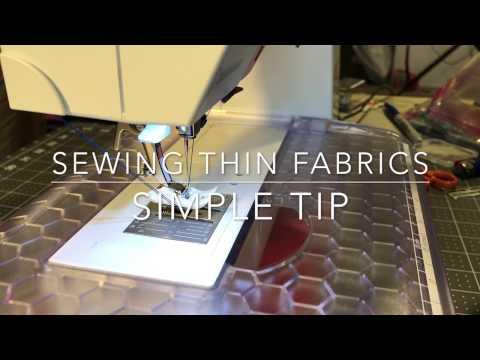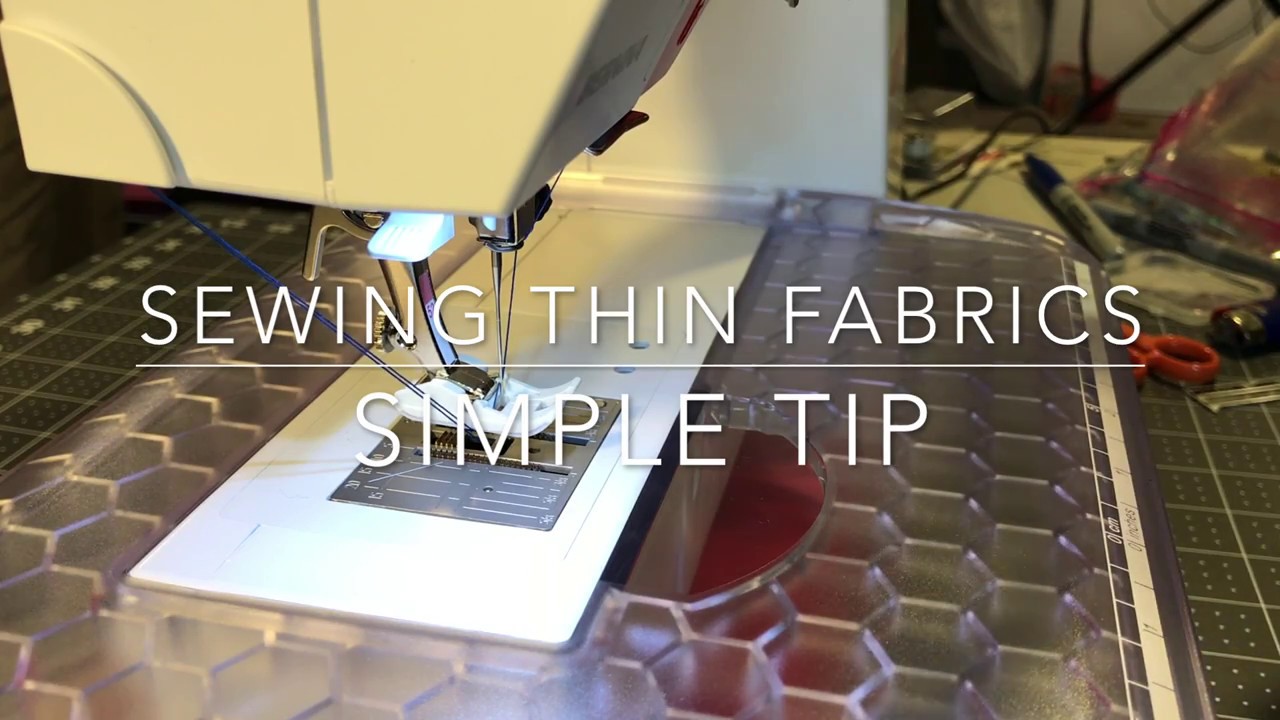Discover the revolutionary fabric thin that will transform your wardrobe and elevate your style to new heights. This incredible textile innovation combines comfort, versatility, and exceptional quality, making it an absolute must-have for fashion enthusiasts. Created with cutting-edge technology, thin offers a unique blend of breathability and softness, ensuring a luxurious feel against your skin. Its lightweight nature allows for effortless movement, providing unrivaled freedom and flexibility throughout your day.
Prepare to be amazed by the thin fabric's extraordinary durability. With its robust construction, it withstands the test of time, ensuring your garments remain in pristine condition for years to come. The fabric's remarkable strength doesn't compromise its elegance, as thin boasts a sleek and refined appearance that effortlessly enhances any outfit. Whether you're dressing up for a formal occasion or seeking casual elegance, this fabric is the perfect choice.
Embrace the endless possibilities offered by thin. Its incredible adaptability makes it suitable for all seasons, keeping you cool in summer and cozy in winter. From lightweight summer dresses to cozy winter sweaters, this fabric seamlessly transitions between different climates, proving to be a versatile companion for year-round fashion. Experience the thin revolution and unlock a world of sartorial excellence. Elevate your wardrobe with this game-changing fabric and make a bold fashion statement wherever you go.
Indulge in the thin fabric's premium quality and unparalleled comfort, and redefine your personal style with confidence. Upgrade your wardrobe today with this remarkable fabric that effortlessly combines fashion-forward design with superior functionality.

Fabric Thin: Exploring the Versatility of Lightweight Fabrics
Fabric is an essential element in the world of fashion and design. It comes in a variety of weights, textures, and finishes, each serving a specific purpose. One such type of fabric that has gained popularity in recent years is thin fabric. With its lightweight and breathable nature, thin fabric offers a myriad of benefits for both clothing and home decor applications.
The Advantages of Thin Fabric
Thin fabric, as the name suggests, is characterized by its lightweight construction. This quality lends itself to a range of advantages:
1. Comfort
Thin fabrics are incredibly comfortable to wear, especially in warmer climates. The lightness of the fabric allows for excellent breathability, preventing excessive sweating and discomfort. Additionally, thin fabrics tend to have a soft and smooth texture, providing a pleasant sensation against the skin.
2. Versatility
Thin fabric is extremely versatile, making it suitable for a wide range of applications. Whether it's used in clothing, accessories, or home decor, thin fabric offers a lightweight and flexible alternative. It can be easily draped, layered, or manipulated to create various styles and designs.
3. Easy Maintenance
Thin fabric is often easier to care for than heavier materials. It can usually be machine washed and dried without the need for special care instructions. This makes it ideal for everyday wear and busy lifestyles, as it requires minimal effort to maintain its quality and appearance.
4. Breathability
One of the key benefits of thin fabric is its breathability. The lightweight construction allows air to circulate freely, keeping the body cool and comfortable. This makes it an excellent choice for summer clothing, activewear, and sleepwear, as it helps regulate body temperature and prevents overheating.
5. Layering Possibilities
Thin fabric is perfect for layering, allowing individuals to create stylish and functional outfits. Whether it's a lightweight cardigan, a sheer blouse, or a flowing scarf, thin fabric layers add depth and dimension to any ensemble. Layering thin fabrics is also a great way to transition between seasons, providing warmth without bulkiness.
Popular Types of Thin Fabric
Thin fabric comes in a variety of types, each with its own unique characteristics and uses. Some of the most popular types of thin fabric include:
1. Chiffon
Chiffon is a sheer and lightweight fabric that is often used in elegant evening wear and feminine blouses. Its delicate drape and soft texture make it a favorite among designers for creating ethereal and flowy garments.
2. Georgette
Georgette is another lightweight fabric known for its slightly crinkled texture. It offers a beautiful drape and is commonly used in dresses, skirts, and blouses. Georgette is often favored for its versatility, as it can be dressed up or down depending on the occasion.
3. Organza
Organza is a crisp and transparent fabric that adds a touch of elegance to any outfit. It is commonly used in formal wear, bridal gowns, and decorative elements such as bows and ruffles. Organza's lightweight nature allows for the creation of dramatic silhouettes and voluminous designs.
4. Voile
Voile is a soft and lightweight fabric that is perfect for summer clothing. It has a slightly sheer appearance and a subtle texture, making it ideal for dresses, blouses, and curtains. Voile's breathability and softness make it a popular choice for warm-weather garments.
5. Silk
Silk is a luxurious and lightweight fabric known for its natural sheen and smooth texture. It is highly prized for its breathability and ability to regulate body temperature. Silk garments are often considered a staple in high-end fashion due to their elegance and comfort.
Conclusion
Fabric thin offers a world of possibilities in terms of comfort, versatility, and style. The lightweight nature of thin fabric makes it ideal for various applications, from clothing to home decor. With its breathability, easy maintenance, and ability to be layered, thin fabric is a favorite among designers and fashion enthusiasts alike. Explore the different types of thin fabric available, and embrace the beauty and functionality they bring to your wardrobe and living spaces.
Title: “Mastering Silnylon: Top Tips for Seamlessly Sewing Ultra-thin Fabric”
Tip: When sewing thin silnylon fabric, ensure a flawless finished product by following these pointers:
1. Use a fine needle: Opt for a microtex or sharp needle with a smaller size to prevent unnecessary punctures or snags on the delicate fabric.
2. Employ tissue paper magic: Place tissue paper under the fabric layers when sewing to prevent slippage and ensure smooth stitching without leaving unsightly marks.
3. Mindful pins and clips: Instead of traditional straight pins, use clips or wonder tape to hold fabric pieces together. These alternatives minimize the risk of creating visible holes in the thin silnylon.
4. Tread gently: Adjust your machine's tension to a lower setting to avoid puckering or distorting the fabric. Test your stitches on a scrap piece before sewing the final seam.
5. Seam seal like a pro: Since silnylon is lightweight and prone to fraying, apply seam sealant along the stitched seams. This extra step will enhance the fabric's durability and waterproof properties.
By implementing these tips, you'll confidently conquer the challenges of sewing with thin silnylon fabric, creating professional-quality projects with ease.
Fabric Thin
Fabric Thinness Comparison
When it comes to fabric thinness, different materials offer varying levels of delicacy and transparency. Here, we present a comprehensive comparison of various fabrics based on their thinness:
| Fabric Type | Thinness Rating |
|---|---|
| Silk | 5/5 |
| Chiffon | 4/5 |
| Organza | 4/5 |
| Tulle | 3/5 |
| Voile | 3/5 |
| Georgette | 3/5 |
| Lace | 2/5 |
| Crepe | 2/5 |
| Cotton Lawn | 2/5 |
| Linen | 1/5 |
As an expert in fabrics, it is crucial to understand the varying thinness levels of different materials. Silk, renowned for its luxurious feel, ranks as the thinnest fabric with a perfect 5/5 rating. It gracefully drapes over the body, creating a delicate and ethereal effect.
Following closely behind silk, chiffon and organza both receive a 4/5 rating in terms of thinness. These fabrics exude sophistication and translucency, making them popular choices for elegant evening gowns and bridal wear.
Tulle, voile, and georgette share a 3/5 thinness rating. These fabrics strike a balance between lightness and structure, offering a subtle sheerness that adds depth to garments without being overly revealing.
For a slightly more substantial thinness level, lace, crepe, and cotton lawn score a 2/5. These fabrics possess a delicate charm, perfect for creating intricate designs and details while maintaining a certain level of opacity.
Finally, linen, with its natural and slightly textured appearance, ranks as the least thin fabric with a 1/5 rating. While linen may not provide the same level of delicacy as silk or chiffon, it offers a unique and breathable option for warmer climates.
Understanding the thinness levels of different fabrics allows designers, seamstresses, and fashion enthusiasts to make informed choices when selecting materials for their creations. Remember, the right fabric thinness can make all the difference in achieving the desired aesthetic and comfort.

